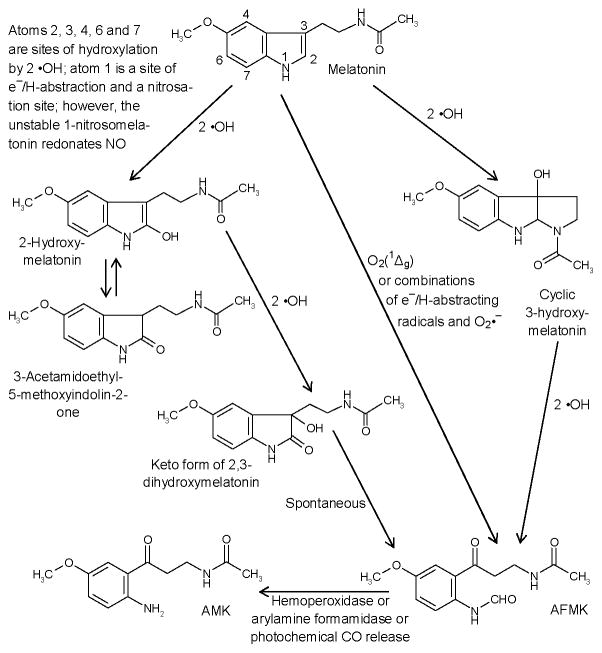Figure 2.
Overview of the major nonenzymatic processes of melatonin conversion.
Notably, the reactive oxygen species include O2(1Δg), •OH and O2•−. These can be formed in the skin at elevated rates by UVA and UVB, though in different proportions and by different mechanisms. These mechanisms include inflammatory responses and mitochondrial damage, or combinations thereof. Examples are O2(1Δg) production by endogenous photosensitizers in UVA, from leukocyte-derived OCl− and H2O2, or peroxynitrite formation via UVA-induced decomposition of NO derivatives and enhanced O2•− from mitochondrial dysfunction or leukocytic NADPH oxidase. The main enzymatic conversion of AFMK (N1-acetyl-N2-formyl-5-methoxykynuramine) to AMK (N1-acetyl-5-methoxykynuramine) has been included, since the latter product represents another potent scavenger of O2(1Δg), peroxyl and peroxynitrite-derived radicals, •NO and its redox congeners. For further products formed from AFMK and AMK (see (s5, s19, s44, s51, s54).

